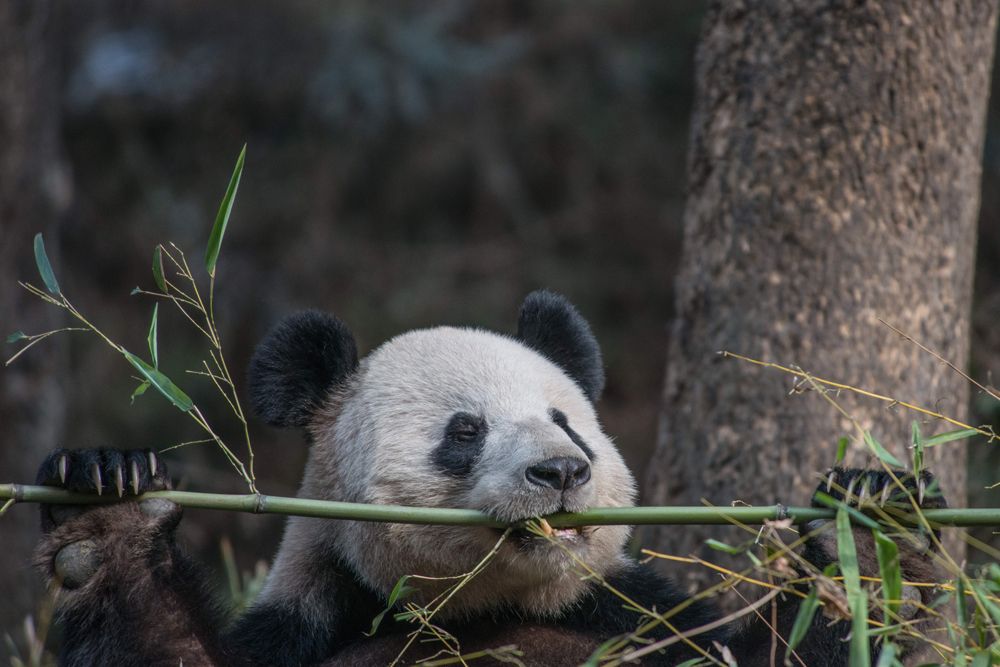
As Bamboo Forests Fade, Can Pandas Survive? (Op-Ed)

Ilissa Ocko, climate scientist at Environmental Defense Fund (EDF), contributed this article to Live Science's Expert Voices: Op-Ed & Insights.
Giant pandas, with their fuzzy raccoon eyes and innocent faces, are one of the world's most treasured endangered species. We look at them and feel compassion. It helps explain why the latest threat to giant pandas , rising global temperatures, has raised such alarm. Poaching and habitat destruction over the past 3,000 years have brought the total panda population down below 2,000 individuals in the wild. Today, giant pandas exist in an area that is less than 1 percent of their historical range.
Several conservation programs over the past few decades effectively prevented panda extinction and have begun to boost the panda population. Unfortunately, this success may be completely offset by the steadily warming climate. The heartbreaking truth is that giant panda habitat may be all but gone by the end of the century, with half of it vanishing by 2070, according to new research in the journal Biological Conservation. And because pandas are famous for their lethargic behavior, the animals will have difficulty adapting to change.
Climate change kills bamboo
Using reliable data and robust modeling techniques, scientists from the Chinese Academy of Sciences and Michigan State University have found that most of the current bamboo habitat will soon become unsuitable for survival, with bamboo estimated to entirely die off within 50 to 100 years, depending on the model. Without bamboo, which is 99 percent of the giant panda diet, the animals are likely to starve.

While other areas may become suitable for bamboo growth, they tend to be in regions where pandas do not live, or in areas outside current panda reserves, where people — not wild animals — make their homes. Fragmented habitats will also prevent the bamboo from easily shifting its habitat, especially as the plants have an unusually long reproductive cycle.
The result: Giant pandas could lose half their habitat with even a two degree Fahrenheit increase in global temperatures . So far, global temperatures have already risen by 1.5 F over the past century, and according to the latest UN Intergovernmental Panel on Climate Change report, temperatures are projected to increase by another 1 to 6 degrees by 2100.
Sign up for the Live Science daily newsletter now
Get the world’s most fascinating discoveries delivered straight to your inbox.
Giant pandas have little energy to adapt. Even if the bamboo were able to successfully migrate, the lack of nutritional value in bamboo leaves the giant panda lethargic. Because a panda's diet consists almost entirely of bamboo, it must eat between 25 pounds and 50 pounds of it every day to survive. It's why pandas spend almost the entire day eating, and barely moving.
It is an effort to get pandas to reproduce, let alone relocate. The likelihood of these animals adapting on their own to a changing world is, therefore, low.
Is it too late to save pandas?
In addition to cutting emissions of heat-trapping gases to limit warming, scientists from the Chinese Academy of Sciences and Rutgers University suggest modifying current conservation strategies to account for a changing climate.
There are several actions that can be taken. To facilitate bamboo survival, forestry planning and management should (i) focus on ensuring connectivity among nature reserves to allow for migration and gene flow, (ii) protect habitats that will soon become climatically suitable for bamboo growth, (iii) begin planting bamboo in new areas, and (iv) adjust existing reserve size, shape and spatial orientation to account for future changes. [Bamboo-Munching Pandas Also Have a Sweet Tooth ]

For example, expanding the Huanglong National Nature Preserve in China to encompass more western land will ensure that the same amount of protected habitat will exist even when a portion of the current nature preserve becomes unsuitable. While establishing connectivity among habitats will also assist in giant panda migration across the landscape, an intensive population management approach may also be necessary. It's possible that small, isolated giant panda populations in considerably threatened areas — such as those in China's Xiaoxiangling and Qinling Mountains — may need to be translocated to new territories.
Such efforts would require careful planning — however, if we prepare now, we can protect this precious and beloved animal from the cascading effects of climate change.
Follow all of the Expert Voices issues and debates — and become part of the discussion — on Facebook, Twitter and Google+. The views expressed are those of the author and do not necessarily reflect the views of the publisher. This version of the article was originally published on Live Science.










